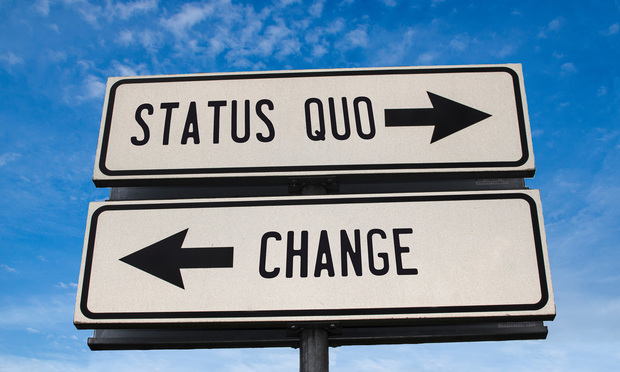CoreLogic has released its annual Natural Hazard Risk Summary and Analysis, which reviews hazard activity in the U.S. each year, including events for flooding, earthquake, wildfire, wind, hail, tornado and hurricanes, as well as international events.
2017 was a year of record-breaking catastrophes with Hurricanes Harvey, Irma and Maria, and the devastating wildfires in California. Aside from the two flood and wildfire categories, 2017 saw relatively average activity for most U.S. natural hazards.
Related: U.S. weather disaster losses total record-setting $306 billion in 2017
Corelogic's 2017 report assesses all of the past year's natural disasters using granular hazard risk data and services. This evaluation accounts for both the physical scale as well as the financial burden of the damage caused during the calendar year. It also assesses the risk levels for both residential and commercial properties, and it draws implications about what this means for 2018.
Here are highlights from each hazard category of Corelogic's 2017 Natural Hazard Risk Summary and Analysis:
Flood
Flooding from Hurricanes Harvey and Irma resulted in an estimated $69 billion to $105 billion in residential and commercial damage.
California and the Midwest also experienced significant rainfall that resulted in flooding. According to the National Centers for Environmental Information (NCEI), total property loss from the California winter floods is estimated at $1.5 billion and total property loss from the Midwest (between Oklahoma and Ohio) April/May flooding is estimated at $1.7 billion.
Related: Mitigating the No. 1 natural disaster in the U.S.
Flood damage in Texas from Hurricane Harvey is estimated at $40 billion to $59 billion, of which $25 billion to $37 billion is residential damage and $15 billion to $22 billion is commercial damage.
Approximately 75% of the flood damage to residential properties from Hurricane Harvey was uninsured.
Flood damage in Florida, Alabama, Georgia, North Carolina and South Carolina from Hurricane Irma is estimated at $29 billion to $46 billion, of which $25 billion to $38 billion is residential damage and $4 billion to $8 billion is commercial damage.
Approximately 80% of the flood damage to residential properties from Hurricane Irma was uninsured. 
Hurricane Harvey caused widespread flooding in Texas. (AP Photo)
Atlantic Hurricanes
Hurricane activity in the Atlantic was higher than average in 2017 with 17 named storms, 10 hurricanes and six major hurricanes, which are identified as Category 3 or greater.
Hurricane Harvey, a Category 4 storm that made landfall in Texas, caused an estimated $1 billion to $2 billion in insured wind and storm surge loss to both residential and commercial properties, and Hurricane Irma, a Category 4 storm that made landfall in South Florida, caused an estimated $14 billion to $19 billion in insured wind and storm surge loss to both residential and commercial properties.
An aerial view of damage caused by Hurricane Harvey in Rockport, Texas, taken on August 28, 2017. (Photo: Shutterstock)
Wind
Due in large part to the strong winds brought by Hurricanes Harvey and Irma, the land area impacted by severe winds (>80 mph) was more than four times greater than in 2016.
At 37%, more than one-third of the continental U.S. experienced wind events of 60 mph or higher in 2017.
Port Aransas, Texas recorded the highest wind speed of the year at 131 mph during Hurricane Harvey.
Western Nebraska recorded the strongest wind gust associated with severe thunderstorms of the year at 115 mph on June 26, 2017.
Related: 3 steps to disaster-proofing your insurance agency

Wildfires devastated northern California in 2017. (Photo source: AP Photo)
Wildfire
The total number of acres burned (9,791,062, acres) in 2017 is the third highest in U.S. history, preceded by 2015 (10,125,149 acres) and 2006 (9,873,745 acres).
The 10 most destructive wildfires in 2017, in terms of structures destroyed, were in California and include:
- The Tubbs Fire in northern California which burned 36,807 acres and 5,643 structures.
- Until the Tubbs Fire, the two worst wildfires in California history — Tunnel in 1991 and Cedar in 2003 — destroyed 5,720 structures combined.
- The Nuns Fire in northern California which burned 54,382 acres and 1,355 structures.
- The Thomas Fire in southern California which burned 281,893 acres and 1,063 structures.
- The Atlas Fire in northern California which burned 51,624 acres and 781 structures.
- The Redwood Valley Fire in southern California which burned 36,523 acres and 544 structures.
- The Cascade Fire in northern California which burned 9,989 acres and 398 structures.
- The Lilac Fire in southern California which burned 4,100 acres and 157 structures.
- The Detwiler Fire in Mariposa County, California which burned 81,826 acres and 131 structures.
- The Creek Fire in southern California which burned 15,619 acres and 123 structures.
- The Helena Fire in Trinity County, California which burned 21,846 acres and 123 structures.
Related: The aftermath of wildfires: Insurance coverage questions answered
(Photo: Shutterstock)
Earthquake
As of December 1, there were 818 identified earthquakes of magnitude 3.0 or greater across the country.
The most notable earthquake events in 2017 include:
- In 2016, approximately 60%t of the total number of earthquakes occurred in Oklahoma, compared with only 28 percent in 2017.
- A Magnitude 5.8 earthquake near Lincoln, Montana on July 6.
- A Magnitude 5.3 earthquake near Soda Springs, Idaho on September 2.
- A Magnitude 4.1 earthquake in Delaware on November 30.
Related: New report details financial impact of September's historical natural disasters

(Photo: Shutterstock)
Hail
Hail activity for 2017 was near average with 168,905 square miles, or 5.5%, of the continental U.S. impacted by severe hail, defined as 1" or greater.
Denver, Colorado experienced the worst of this natural hazard with estimated losses of $1.4 billion from approximately 150,000 auto insurance claims and approximately 50,000 homeowner insurance claims.
(Photo: Shutterstock)
Tornadoes
The number of tornadoes in 2017 was above average with 1,522 recorded tornadoes, making it the third most active year since 2005.
With 81 confirmed tornadoes between Mississippi and Georgia, the month of January experienced the most tornado activity in 2017.
Related: 5 keys to 'insuring' a safer 2018
Want to continue reading?
Become a Free PropertyCasualty360 Digital Reader
Your access to unlimited PropertyCasualty360 content isn’t changing.
Once you are an ALM digital member, you’ll receive:
- Breaking insurance news and analysis, on-site and via our newsletters and custom alerts
- Weekly Insurance Speak podcast featuring exclusive interviews with industry leaders
- Educational webcasts, white papers, and ebooks from industry thought leaders
- Critical converage of the employee benefits and financial advisory markets on our other ALM sites, BenefitsPRO and ThinkAdvisor
Already have an account? Sign In Now
© 2025 ALM Global, LLC, All Rights Reserved. Request academic re-use from www.copyright.com. All other uses, submit a request to [email protected]. For more information visit Asset & Logo Licensing.











